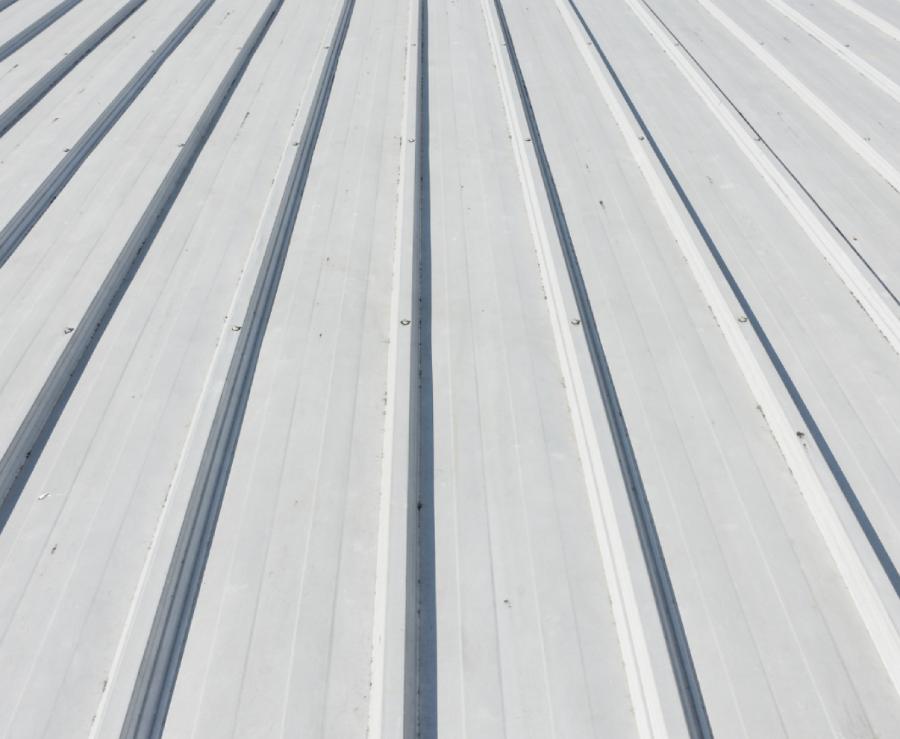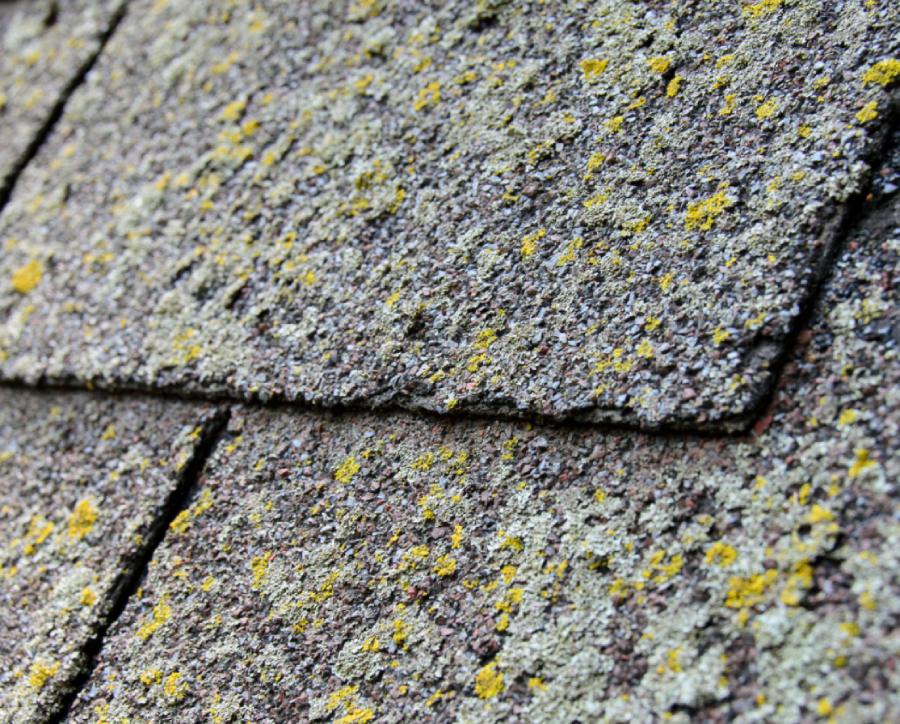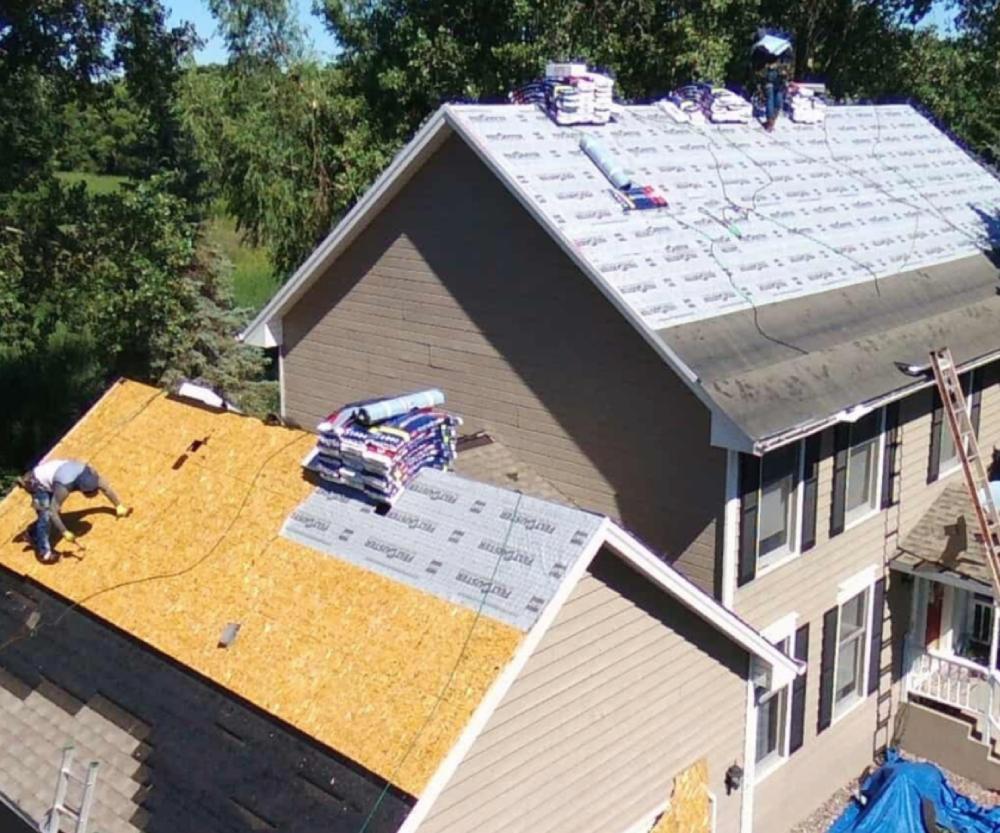Siding or Roof First: A Guide to Prioritizing Repairs After a Storm
Severe storms in the Midwest can leave homeowners facing significant damage to their properties. The high winds, hail, and torrential rain typical of these storms can wreak havoc on the structural integrity of homes.
After such events, homeowners often find themselves in a quandary, trying to decide whether to prioritize siding replacement or roof repairs. The aftermath can be overwhelming, with visible and sometimes hidden damages that could compromise the safety and comfort of your home.
This guide aims to help homeowners make informed decisions about which exterior repairs to tackle first after a storm.
Assessing Storm Damage
Inspect Your Property
After a storm, the first step is to inspect your property for visible damage. Begin by taking a cautious walk around your home, looking for signs of damage such as missing shingles, dents in the siding, or fallen debris. Pay particular attention to areas where water might pool or where branches and other debris might have struck your home.
Professional inspectors can identify subtle signs of damage that might go unnoticed, such as hairline fractures in shingles or slight misalignments in siding panels. They can also assess the overall structural integrity of your roof and siding, providing you with a detailed report of the condition of your home’s exterior. This report can serve as a valuable tool when discussing repair options with contractors or when filing an insurance claim.
Document the Damage
It's important to document any damage you find. Take clear photos and notes of the affected areas to provide to your insurance company and contractors. Ensure your documentation is thorough, capturing wide shots of the affected areas and close-ups of specific damage. This documentation will be crucial when filing a claim or discussing repairs, as it provides a clear record of the storm’s impact on your home.
Understanding the Importance of Roof Repairs
The Roof as the First Line of Defense
Your roof is your home's primary defense against the elements. It protects the interior from rain, snow, and wind, acting as a crucial barrier that preserves the structural integrity of your home. Any damage to the roof can lead to leaks and further structural issues, making roof repairs a top priority. A compromised roof can allow water to infiltrate, causing damage to insulation, electrical systems, and even the foundation if left unchecked.
The importance of a well-maintained roof cannot be overstated. It not only protects your home but also contributes to energy efficiency by maintaining a stable internal temperature. Investing in timely roof repairs can prevent more extensive damage and expensive repairs in the future, ensuring longevity and home value.
Signs You Need Roof Repairs
- Missing or Damaged Shingles: Shingles protect your roof's underlayment, so missing or damaged ones can expose your home to water damage. Missing shingles are often the most visible sign of damage and should be addressed immediately to prevent leaks.
- Leaks or Water Stains: Water stains on your ceiling or walls are clear indicators of roof leaks. These stains can lead to mold growth and structural damage if not promptly addressed.
- Sagging Roof Deck: If the roof deck appears saggy, it could be a sign of structural damage needing immediate attention. A sagging roof can indicate problems with the roof's support system, which could lead to a collapse if not repaired.
Roof Maintenance Tips
Regular maintenance can prevent future storm damage. Here are some tips:
- Inspect Regularly: Have a professional inspect your roof at least once a year. Regular inspections can catch small issues before they become significant problems, saving you money in the long run.
- Clean Gutters: Ensure gutters are clear of debris to prevent water buildup. Clogged gutters can lead to water overflow, which can damage your roof and siding.
- Trim Branches: Reduce the risk of branches falling on your roof during storms. Overhanging branches can not only damage your roof but also provide a pathway for pests to enter your home.
The Role of Siding in Home Protection
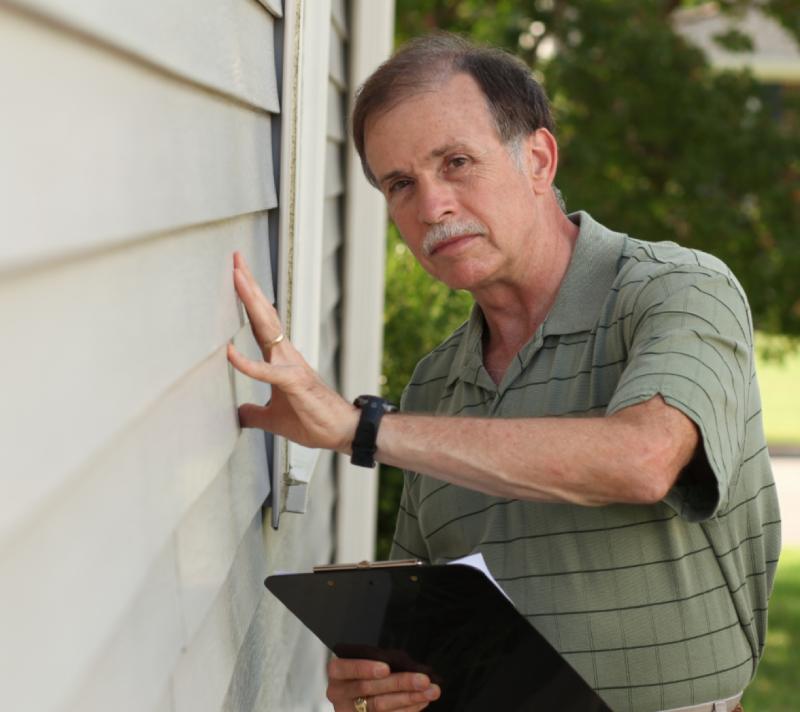
Siding's Protective Function
Siding not only enhances your home's curb appeal but also serves as a protective barrier against harsh weather. It insulates your home and protects it from moisture, pests, and temperature fluctuations. Good siding acts as a shield, preserving the integrity of your home's frame and contributing to energy efficiency by maintaining consistent indoor temperatures.
The aesthetic appeal of siding should not be underestimated. Quality siding can increase the value of your home, making it more attractive to potential buyers. However, its primary function is protection, and ensuring your siding is in good condition is essential for maintaining the overall health of your home.
When to Consider Siding Replacement
- Cracks or Holes: These can allow moisture and pests to enter your home. Even small cracks can lead to significant damage over time if not repaired.
- Warping or Bubbling: Indicates water damage and potential for mold growth. Warped siding can compromise the structural integrity of your home's exterior and should be addressed promptly.
- Faded or Peeling Paint: While more cosmetic, it can indicate the siding's protective layer is compromised. Peeling paint can expose the underlying material to the elements, accelerating deterioration.
Siding Replacement Options
When replacing siding, consider materials that offer durability and weather resistance, such as vinyl, fiber cement, or engineered wood. These materials are designed to withstand harsh weather conditions and provide long-lasting protection for your home. Vinyl siding is a popular choice due to its affordability and low maintenance requirements, while fiber cement offers excellent durability and resistance to fire and pests. Engineered wood provides a natural look with enhanced durability and weather resistance.
Selecting the right material for your siding replacement involves considering factors such as climate, budget, and personal preference. Consulting with a professional can help you choose the best option for your home, ensuring that your siding not only looks great but also provides the necessary protection.
Siding vs. Roof Repairs: Which Comes First?
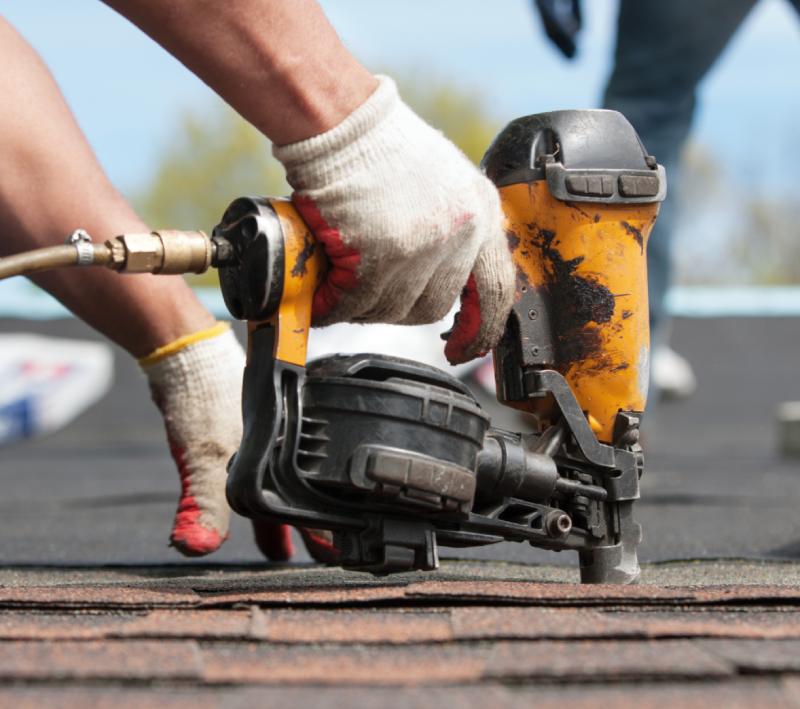
Prioritizing Based on Damage Severity
The decision between siding vs. roof repairs depends largely on the severity of the damage. If the roof is leaking or structurally compromised, it should take precedence. Roof issues can lead to interior damage, including mold growth and compromised insulation.
However, if both the roof and siding are equally damaged, consulting with a roofing contractor can provide clarity. They can assess the urgency of each repair and help you prioritize based on potential risks and costs.
In some cases, addressing both issues simultaneously might be the best course of action. A comprehensive approach can prevent small problems from escalating and ensure that your home is fully protected from future storms.
Cost and Budget Considerations
Budget constraints may also influence your decision. Roof repairs can be more costly, but addressing roof issues early can prevent more expensive problems later. Investing in roof repairs now can save you money in the long run by avoiding extensive interior damage and structural repairs.
Siding repairs might be more affordable, but ignoring them could lead to increased utility bills and interior damage. Proper insulation and protection provided by siding can significantly impact your home's energy efficiency, leading to savings on heating and cooling costs.
It's essential to weigh the costs and benefits of each repair option carefully. Consulting with contractors and reviewing your budget can help you make informed decisions that align with your financial situation and long-term home maintenance goals.
Working with Roofing Contractors
Choosing the Right Contractor
When selecting a contractor, consider these tips:
- Check Credentials: Ensure the contractor is licensed and insured. Proper credentials indicate professionalism and reliability.
- Read Reviews: Look for testimonials from other homeowners. Customer feedback can provide insight into the contractor's quality of work and customer service.
- Get Multiple Quotes: Compare prices and services offered. Multiple quotes allow you to evaluate your options and choose a contractor that offers the best value.
A reliable contractor can make a significant difference in the quality and longevity of your repairs. Take the time to research and select a contractor who meets your needs and expectations.
Questions to Ask
- What is the estimated timeline for repairs? Understanding the timeline can help you plan and manage your expectations.
- Are there warranties or guarantees on the work? Warranties provide peace of mind and protect your investment.
- What materials are recommended for my home? A knowledgeable contractor can recommend materials that suit your home’s specific needs and climate.
Asking the right questions can help you gauge the contractor's expertise and ensure that your repair project is in capable hands.
Conclusion
Deciding whether to prioritize siding or roof repairs after a Midwest storm can be challenging. By assessing the damage, understanding the importance of each repair, and consulting with professional roofing contractors, you can make informed decisions that protect your home and ensure its longevity. Remember to maintain regular upkeep to minimize future storm damage and safeguard your investment. Proactive maintenance and timely repairs can save you time, money, and stress in the long run, ensuring your home remains a safe and comfortable haven for years.
For expert siding and roofing services in the Clive area, contact our team at Universal Roofing and Construction today!
Choosing the Right Commercial Roofing System
Commercial roofing systems are available in a variety of materials and configurations, each offering distinct advantages and suited to specific applications. Making the right choice depends on understanding these differences and how they align with your business's requirements. From traditional options like Built-Up Roofing (BUR) to modern, eco-friendly solutions such as green roofing, the landscape of commercial roofing is diverse and evolving.
Built-Up Roofing (BUR)
Built-Up Roofing, commonly known as BUR, is one of the oldest and most reliable commercial roofing systems, celebrated for its robustness and long-standing performance. Comprising multiple layers of tar and gravel, BUR offers excellent waterproofing and is particularly effective on flat or low-sloped roofs. Its multilayered design not only enhances durability but also provides superior insulation, which can contribute to reducing energy costs over time.
BUR systems are known for their longevity, often lasting over 20 years with proper maintenance. They are well-suited for buildings that face harsh weather conditions as they can withstand heavy rains and winds. However, one of the trade-offs is the weight of the system, which requires a strong structural foundation to support it. This makes it crucial to assess your building’s load-bearing capacity before opting for a BUR system.
Modified Bitumen Roofing
Modified bitumen roofing is an advanced iteration of the traditional BUR system, designed for ease of installation and enhanced performance. It features layers of asphalt with plastic or rubber additives, providing increased flexibility and resilience against extreme weather conditions. This roofing system is often the go-to choice for roofs that endure heavy foot traffic due to its robustness and ability to resist wear and tear.
The flexibility of modified bitumen makes it suitable for a variety of climates, expanding and contracting without causing damage, which is particularly beneficial in areas with significant temperature fluctuations.
Single-Ply Membrane Roofing (TPO & EPDM)
Single-ply membrane roofing systems have gained popularity due to their lightweight, flexible nature, and ease of installation. These systems primarily consist of two types: TPO (Thermoplastic Polyolefin) and EPDM (Ethylene Propylene Diene Monomer). TPO is lauded for its energy efficiency, reflecting UV rays and thereby reducing cooling costs significantly. On the other hand, EPDM is renowned for its durability and exceptional resistance to UV damage, making it a reliable choice for various climates.
Both TPO and EPDM are straightforward to install and maintain, making them a cost-effective option for many businesses. They offer excellent resistance to chemicals and pollutants, which is advantageous for industrial environments.
Metal Roofing
Metal roofing is a versatile option, accommodating a wide range of commercial building designs. Available in materials such as steel, aluminum, and copper, metal roofs provide outstanding durability and can last upwards of 50 years with proper maintenance. They are highly resistant to weather elements, fire, and pests, making them a solid investment for any business looking to minimize long-term maintenance costs.
Beyond their practical benefits, metal roofs also offer aesthetic flexibility, available in various styles and colors to suit different architectural designs. They are particularly effective in areas prone to extreme weather, as they can withstand high winds and heavy snowfall.
Green Roofing
Green roofing systems are rapidly gaining popularity due to their environmental benefits and aesthetic appeal. These roofs incorporate layers of vegetation, providing natural insulation and reducing the building's overall heat absorption. By improving air quality and managing stormwater runoff, green roofs are an eco-friendly choice for businesses that prioritize sustainability and wish to reduce their carbon footprint.
Key Considerations When Choosing a Roofing System
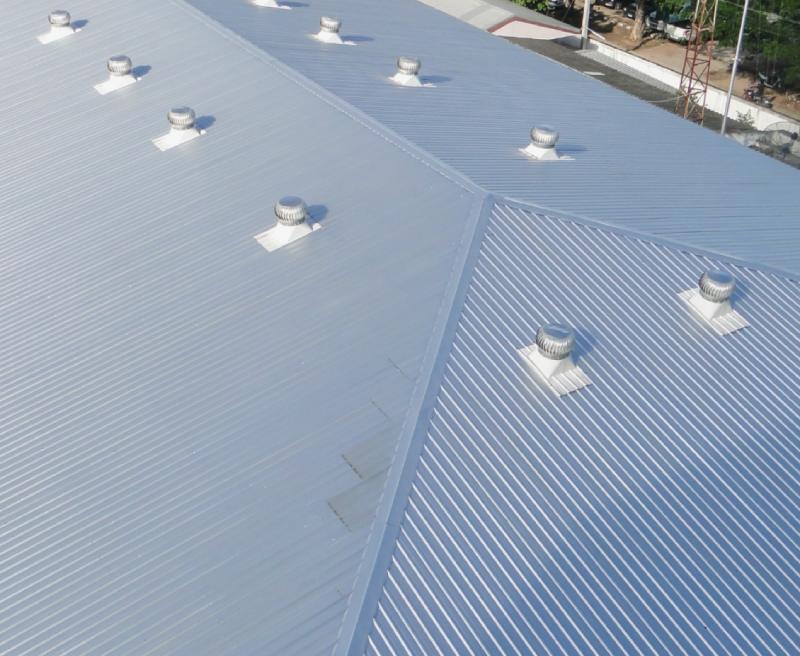
Selecting the right roofing system involves more than just picking a material that looks good or fits your budget. Several critical factors must be considered to ensure that the chosen system meets your business’s specific needs and long-term goals.
Climate and Environmental Factors
The local climate is one of the most influential factors in determining the best roofing material for your commercial building. For instance, metal roofs are excellent for areas with heavy snowfall due to their ability to shed snow easily, preventing accumulation and structural stress. Conversely, TPO roofing is ideal for regions with high temperatures, as it reflects sunlight, thereby reducing cooling costs and enhancing energy efficiency.
Understanding the local weather patterns helps in selecting a roofing material that offers optimal protection against environmental challenges. In areas prone to hurricanes or severe storms, a roofing system with high wind resistance is essential. Similarly, regions with frequent rainfall should prioritize materials with excellent waterproofing capabilities to prevent leaks and water damage.
Building Structure and Design
The architectural design and structural integrity of your building play a pivotal role in selecting a roofing system. Flat roofs are typically compatible with BUR or modified bitumen systems, while pitched roofs might benefit more from metal or single-ply membrane options.
Consideration of the building's design also involves aesthetic elements, as the roof should complement the overall appearance of the property. For example, green roofs can add a unique visual element to urban buildings, while metal roofs can enhance modern architectural styles. Ensuring the roof aligns with both functional and aesthetic aspects is key to making an informed choice.
Budget and Long-Term Value
Budget constraints often play a significant role in determining the most suitable roofing system for a commercial building. While some systems may have higher initial costs, they can offer substantial long-term savings through enhanced durability and energy efficiency. It's crucial to balance the upfront investment against potential maintenance and operational savings over the roof's lifespan.
The Importance of a Trusted Roofing Contractor
The expertise of the roofing contractor is as important as the material itself in ensuring a successful roofing project. A reputable contractor will guarantee proper installation, which is crucial to maximizing the lifespan and performance of the roof. It's advisable to seek a commercial roofing company with a proven track record in professional installations and a history of satisfied clients.
Before hiring, verify the contractor’s credentials, including licenses, insurance, and certifications. Request references and, if possible, visit previous projects to assess the quality of their work. A skilled contractor will also provide valuable guidance on material selection and maintenance practices, ensuring that your investment is well-protected.
What to Expect During the Installation Process
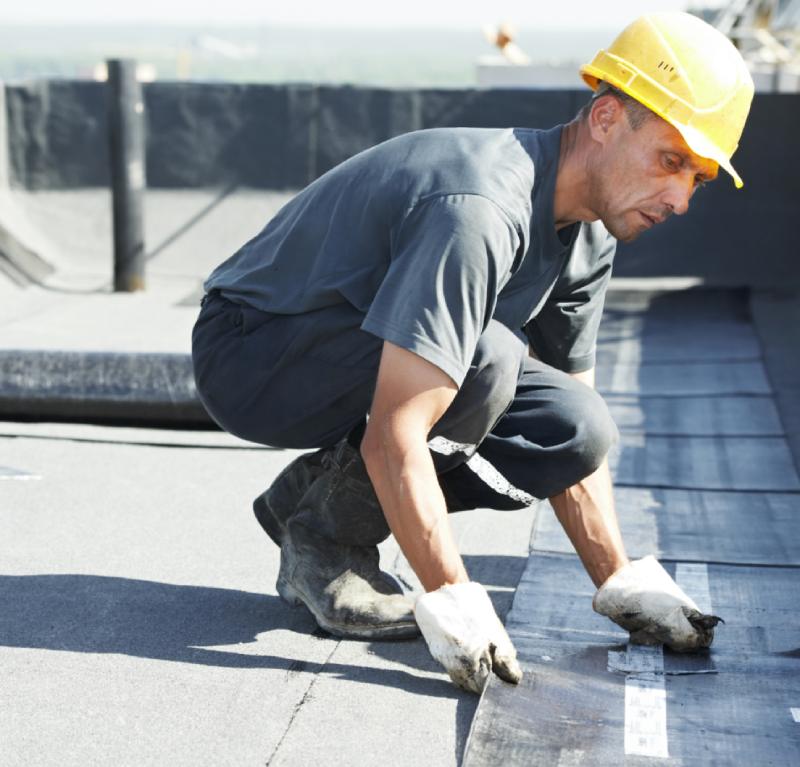
The installation process for commercial roofs can vary significantly depending on the type of system chosen. Understanding the general steps involved can help set expectations and ensure the project runs smoothly.
- Roof Inspection and Preparation: The initial phase involves a thorough inspection of the existing roof to identify any underlying issues that need addressing before installation.
- Installation: The process is tailored to the specific system—BUR layering, single-ply rolling and sealing, or precise panel work for metal roofs.
- Final Inspection: A detailed inspection ensures the roof meets all safety and performance standards.
Maintenance Tips for Longevity
Regular maintenance is critical to prolonging the life of your commercial roof and preventing expensive repairs. Implementing a consistent maintenance schedule can help identify and address issues before they escalate.
- Regular Inspections: At least twice a year (spring and fall) to catch seasonal damage.
- Clean Gutters and Drains: Prevent water buildup and structural issues.
- Address Repairs Promptly: Don’t delay necessary fixes.
- Hire Professional Maintenance Services: Ensure expert care and thorough upkeep.
Final Thoughts
Choosing the right commercial roofing system involves careful consideration of various factors, including material type, climate, building structure, and budget. By understanding the different roofing systems available and working with a reputable roofing contractor, you can ensure your business is protected by a durable and efficient roof. Regular maintenance and timely repairs will further extend the life of your roof, safeguarding your investment for years to come.
Remember, investing in the right commercial roofing system is not just about protecting your building; it's about enhancing its efficiency and value. Make an informed decision to secure your business's future, ensuring that your roofing choice reflects both your immediate needs and long-term goals. For expert commercial roofing services in the Montgomery area, contact our team at Universal Roofing and Construction today!
Is Your Roof Damaged by Storms or Just Old?
Determining whether your roof's condition is due to storm damage or simply age can be challenging. Roofs are exposed to various weather elements, from scorching sun to heavy rain and snow. These elements, over time, contribute to the gradual degradation of roofing materials, making them susceptible to damage. Hence, it's crucial to accurately assess the cause of any damage to determine whether a simple repair will suffice or if a complete replacement is necessary.
Understanding the distinction between storm-induced damage and age-related wear can guide you in making informed decisions about maintenance and repairs, ensuring your home remains protected from the elements.
Heavy Rain
Prolonged heavy rain can lead to water pooling on your roof, resulting in leaks or water damage. Water stains on your ceiling or walls and damp spots in your attic are signs of potential rain damage. In addition to visible signs, water can seep into the underlying layers of your roofing structure, causing unseen damage that may only become apparent over time. Addressing water intrusion promptly can prevent mold growth and preserve the integrity of your home's structure.
Fallen Debris
Storms can cause branches or other debris to fall onto your roof, leading to structural damage. Check for visible dents, cracks, or punctures in your roofing material after a storm. Large branches or debris can severely compromise the roof's structural integrity, necessitating immediate repair or replacement. Removing debris quickly and assessing the damage can prevent further deterioration and help maintain your roof's longevity.
Distinguishing Age-Related Roof Wear
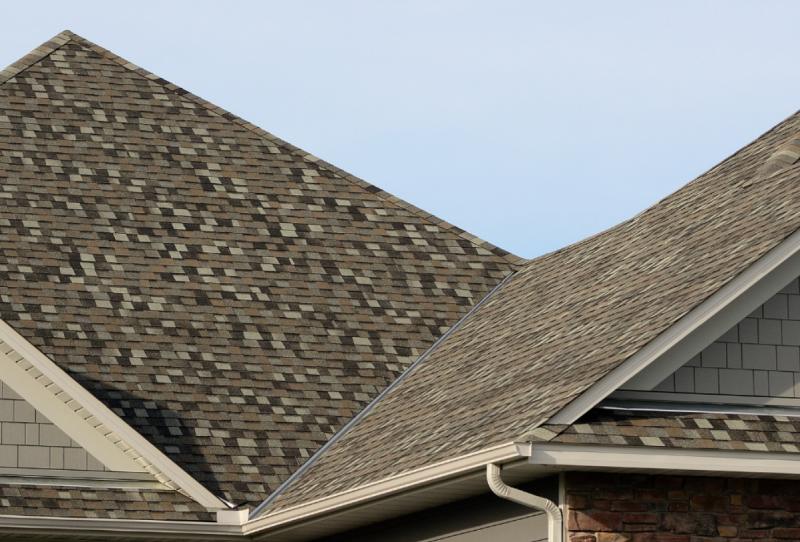
Unlike storm damage, age-related wear is a gradual process that occurs over time. Most roofs have a lifespan of 20 to 30 years, depending on the materials used. As your roof ages, it naturally loses its ability to protect your home effectively. Recognizing the signs of an aging roof can help you determine if it's time for a replacement. Regular maintenance and inspections can extend the lifespan of your roof, but eventually, all roofs will need to be replaced.
Understanding the signs of age-related wear ensures that you can plan for a replacement before serious problems develop.
Signs of an Aging Roof
Shingle Deterioration
Over time, shingles can become brittle, crack, or curl. If you notice these signs, it might indicate that your roof is nearing the end of its lifespan.
Additionally, if you find granules in your gutters, it could mean your shingles are deteriorating. The loss of granules not only affects the appearance of your roof but also its functionality, exposing the underlying materials to the elements.
Regularly cleaning your gutters and inspecting for granule loss can help you monitor the condition of your shingles.
Sagging Roof
A sagging roof is a clear indication of age-related wear. This issue often results from prolonged exposure to moisture, which weakens the underlying structure. If your roof is sagging, it's crucial to consult a roofing company for an assessment.
Sagging can also result from structural damage or inadequate support, making it a serious issue that requires immediate attention. Ensuring proper ventilation and addressing moisture issues can help prevent sagging and prolong the life of your roof.
Moss and Algae Growth
Moss and algae can grow on older roofs due to prolonged exposure to moisture. While these growths may not always cause immediate damage, they can trap moisture, leading to further deterioration. Regular cleaning and maintenance can help manage moss and algae growth, preserving your roof's appearance and functionality. In some cases, installing zinc or copper strips can prevent moss and algae from taking hold, providing an effective long-term solution.
Conducting a Storm Damage Assessment
To accurately determine the cause of your roof's condition, conducting a thorough storm damage roof repair assessment is essential. While some signs of damage are visible, others require professional evaluation. Here's how you can go about it:
Inspect the Exterior
Start by inspecting the exterior of your roof. Look for missing, damaged, or lifted shingles. Check for signs of debris impact and examine your gutters for granule buildup. If you have a safe way to access your roof, you might also want to inspect the surface for dents or cracks.
Taking photos during your inspection can help you document damage for insurance purposes and provide a reference for professionals. Remember, safety is paramount, so only inspect your roof if you can do so safely.
Assess the Interior
Next, move indoors and check your attic for signs of leaks or water damage. Look for water stains on your ceiling and walls, as well as any damp areas or mold growth. These signs can indicate roof damage that needs immediate attention.
Conducting regular roof inspections can help you catch leaks early, preventing more extensive water damage and mold growth. Using a flashlight can help you spot subtle signs of damage that might otherwise go unnoticed.
Professional Evaluation
For a thorough assessment, consider hiring a professional roofing contractor. A roofing company can provide a detailed storm damage report, identifying both visible and hidden issues. Professionals have the experience and tools to assess the extent of the damage accurately and recommend the best course of action.
An expert evaluation can also help you navigate insurance claims, ensuring you receive the coverage you're entitled to. Regular professional assessments can catch potential issues before they become major problems, saving you time and money in the long run.
Conclusion
Distinguishing between storm damage and age-related wear on your roof is essential for deciding the best course of action. While some signs are easy to spot, others require a professional assessment. By understanding the differences and conducting a thorough inspection, you can ensure your roof receives the care it needs.
Whether you opt for a repair or replacement, choosing a reliable roofing company will provide peace of mind and protect your home for years to come. Regular maintenance and proactive inspections can extend the life of your roof, safeguarding your investment and maintaining the value of your property. For expert services in Nashville, contact our roof repair company, Universal Roofing and Construction, today!
What to Expect During a Roof Replacement?
Before diving into the roof replacement process, conduct a thorough roof inspection. This step helps identify the current condition of your roof and determines the extent of the work needed.
Roofing contractors will examine various components, including shingles, flashing, and structural integrity. This inspection will also help in estimating the roof replacement costs and deciding if a full replacement is necessary. Identifying issues such as leaks, mold, or damaged underlayment early can prevent further damage and potential cost increases.
Choosing the Right Roofing Contractor
Selecting the right roofing contractor is crucial for a successful roof replacement. Look for experienced professionals who are licensed, insured, and have positive customer reviews. A reputable contractor will provide a detailed roof cost estimator and guide you through the materials and options available for your project.
Remember, the lowest quote might not always be the best option, so weigh the contractor's experience and reputation alongside their pricing. It's also beneficial to ask for references and check previous projects to evaluate the quality of their work.
In addition to experience and credentials, consider the contractor's communication style and their willingness to address your concerns. A contractor who listens and responds to your questions can make the process less stressful and more transparent.
A good contractor will not only focus on the technical aspects of the job but also respect your property and maintain a clean work environment. By choosing a contractor who aligns with your expectations and values, you ensure a more satisfactory roof replacement experience.
Deciding on Roofing Materials
One of the key decisions during a roof replacement is selecting the right materials. Your choice will impact both the aesthetics and longevity of your new roof. Common residential roofing materials include asphalt shingles, metal, wood, and tile. Each material has its pros and cons, such as durability, cost, and energy efficiency. Consider your budget, climate, and personal preferences when making this decision. For example, metal roofs are known for their longevity and energy efficiency, but may be more costly upfront compared to asphalt shingles.
Beyond the basics of cost and durability, consider the environmental impact and sustainability of the roofing materials. Some options, like recycled shingles or cool roofing materials, offer eco-friendly benefits and can reduce your home's carbon footprint. Moreover, the right material can enhance your home's resale value and curb appeal, making it a worthwhile investment. Collaborating with your contractor to explore various material options can help you find a balance between aesthetics, performance, and cost-effectiveness that suits your specific needs.
The Roof Replacement Timeline

Pre-Installation Preparations
Once you've chosen a contractor and materials, the next step is preparing for the installation. This phase involves scheduling the work, acquiring necessary permits, and ordering materials. Depending on the contractor's schedule and material availability, this phase can take a few days to a couple of weeks. It's crucial to coordinate with your contractor to ensure all preparations align with your timeline and avoid unnecessary delays.
During this stage, you may also need to prepare your home and property for the upcoming work. This could involve moving outdoor furniture, protecting landscaping, and ensuring there is clear access to the roof for workers and equipment. Effective communication with your contractor about your expectations and any concerns can help streamline the preparation process and set the stage for a successful installation.
Roof Removal
The actual roof replacement begins with removing the old roofing materials. This process involves stripping away shingles, underlayment, and other components down to the roof deck. It's essential to have a plan for debris removal and disposal to keep your property clean and safe during this phase. Contractors often use tarps and other protective measures to minimize damage to your property while removing old materials.
Safety is paramount during roof removal, both for the workers and your property. Properly securing the worksite and using appropriate safety gear can prevent accidents and ensure the job proceeds smoothly. Additionally, this phase provides an opportunity to inspect for any hidden issues, such as water damage or pests, that might have been concealed by the old roofing materials. Addressing these issues promptly can prevent further complications and set a solid foundation for the new roof.
Roof Deck Inspection and Repair
After the old roof is removed, the roof deck will be inspected for any damage or rot. If any issues are found, repairs will be necessary before proceeding with the installation of the new roof. Addressing these problems early ensures the longevity and stability of your new roof. A solid roof deck provides a dependable foundation that supports the new roofing materials, contributing to the overall durability and performance of your roof.
In some cases, additional structural reinforcements may be needed, particularly if you are upgrading to a heavier roofing material. Collaborating with your contractor to address any necessary repairs or reinforcements can help prevent future issues and extend the lifespan of your roof. This stage is also an excellent opportunity to assess and improve your roof's insulation and ventilation, which can enhance energy efficiency and indoor comfort.
Installation of New Roofing Materials
With a sound roof deck, the installation of new roofing materials can begin. This phase involves laying down underlayment, installing flashing, and securing the chosen roofing material. The duration of this phase depends on the size of your roof and the type of material selected.
On average, a roof replacement can take anywhere from a few days to a week. The complexity of your roof design and weather conditions can also influence the timeline.
Precision and attention to detail are crucial during installation to ensure the new roof performs optimally. Properly installed flashing and underlayment protect against leaks and water damage, while ensuring correct alignment and spacing of shingles or tiles contributes to the roof's aesthetic appeal and structural integrity. Your contractor should perform regular quality checks throughout the process to guarantee a high-quality result.
Cost Considerations
The cost of a roof replacement can vary widely depending on several factors, including the size of your roof, the materials selected, labor costs, and any necessary repairs or upgrades. On average, homeowners can expect to pay between $8,000 and $15,000 for a full replacement, though this range can be higher for premium materials or complex roof designs.
Your contractor should provide a clear and itemized estimate that breaks down material, labor, and additional costs such as permits or disposal fees. Be sure to ask about warranties, financing options, and any available rebates—especially if you're installing energy-efficient or eco-friendly materials.
Key Takeaways and Final Decisions
Replacing your roof is a major investment that involves a series of critical decisions—from choosing a contractor and materials to understanding the project timeline and cost breakdown. To ensure a smooth and successful experience:
- Schedule a professional inspection to assess the condition of your existing roof.
- Choose a reputable contractor who communicates well and provides a detailed estimate.
- Select roofing materials that align with your goals for durability, aesthetics, and efficiency.
- Prepare your home and timeline to accommodate each phase of the project.
- Budget accordingly and plan for any unexpected repairs that might arise.
By staying informed and involved throughout the process, you can confidently navigate your roof replacement and make the best decisions for your home’s future. For expert roof replacement services in Buford, contact our team at Universal Roofing and Construction.



